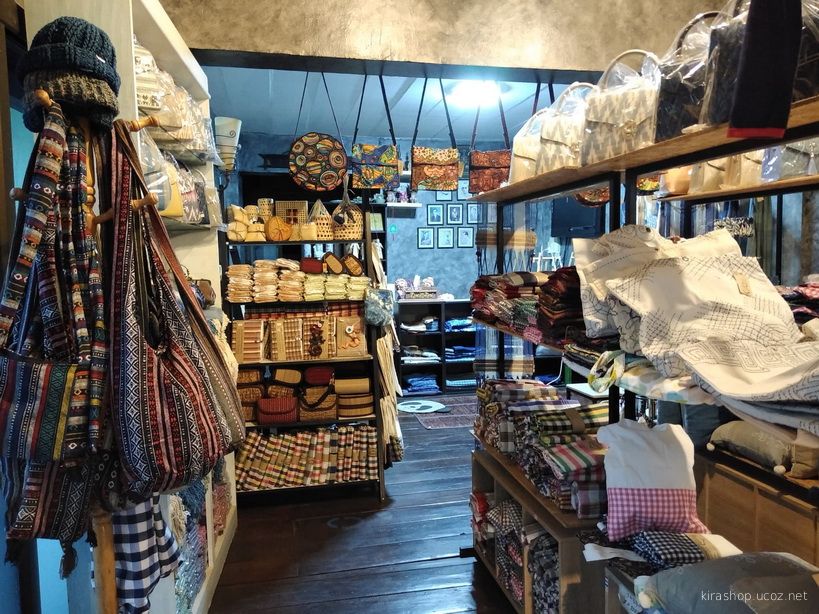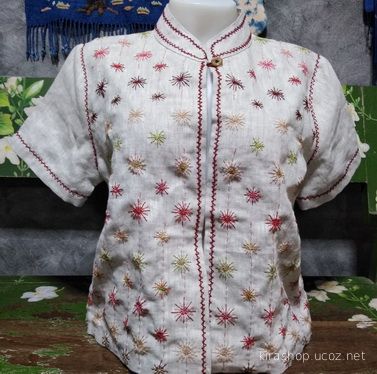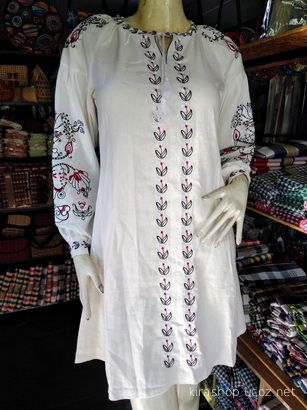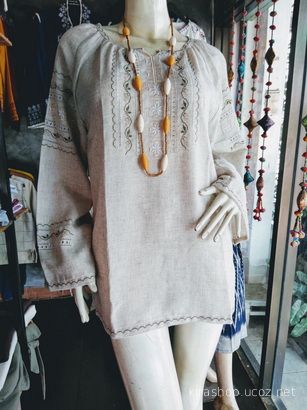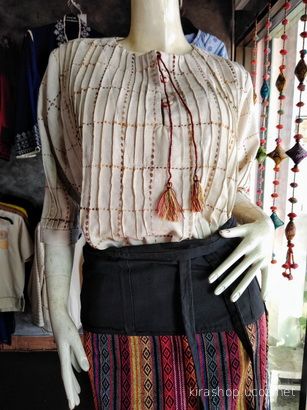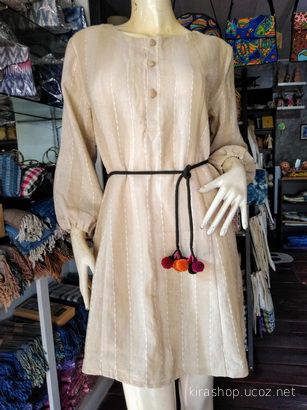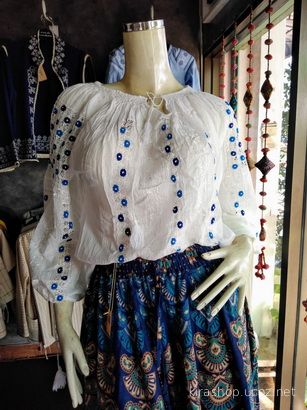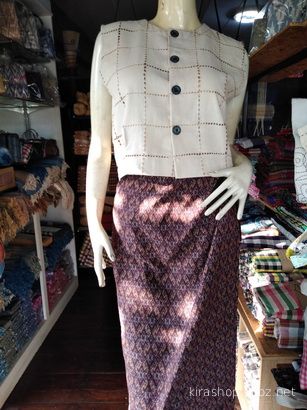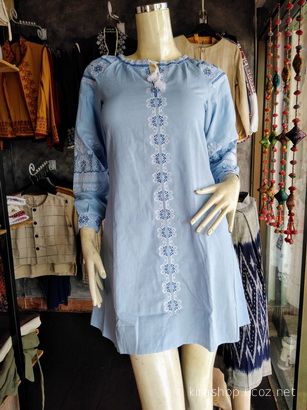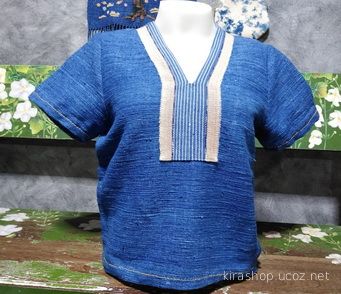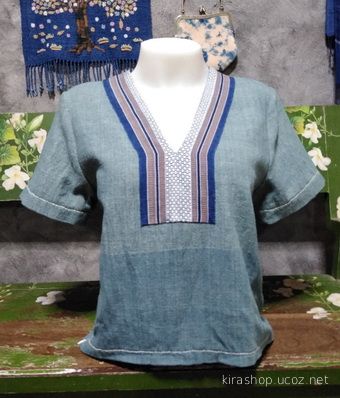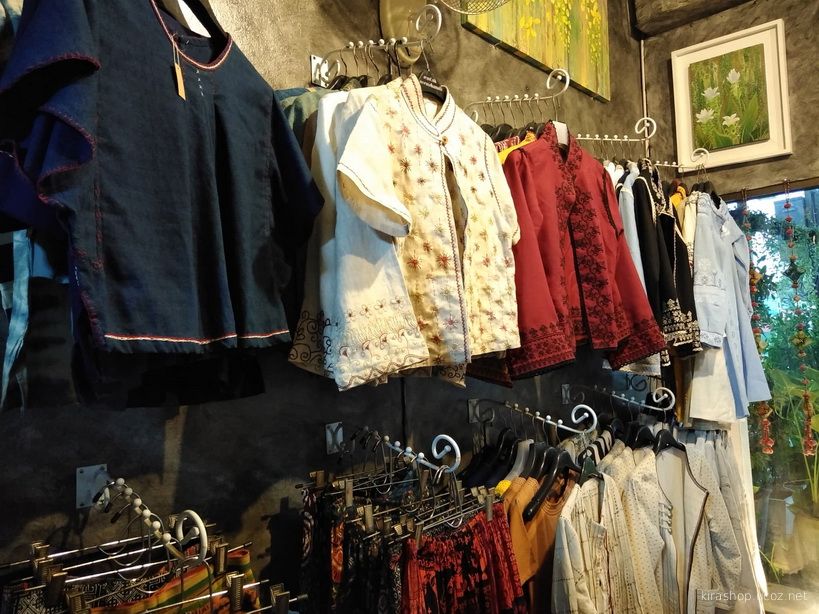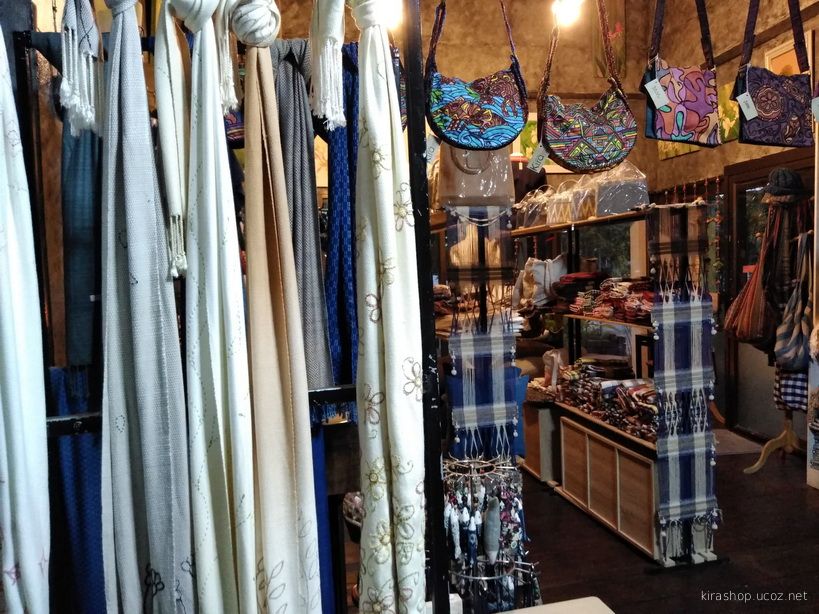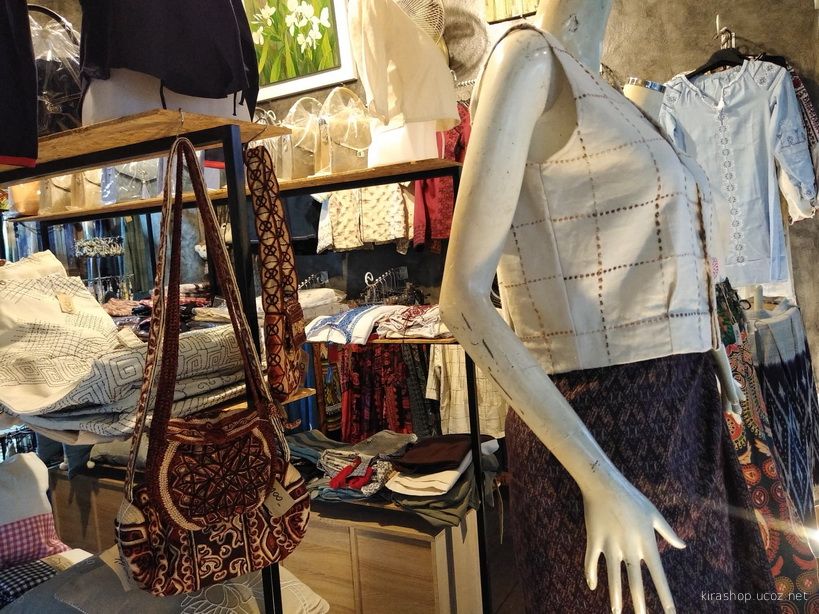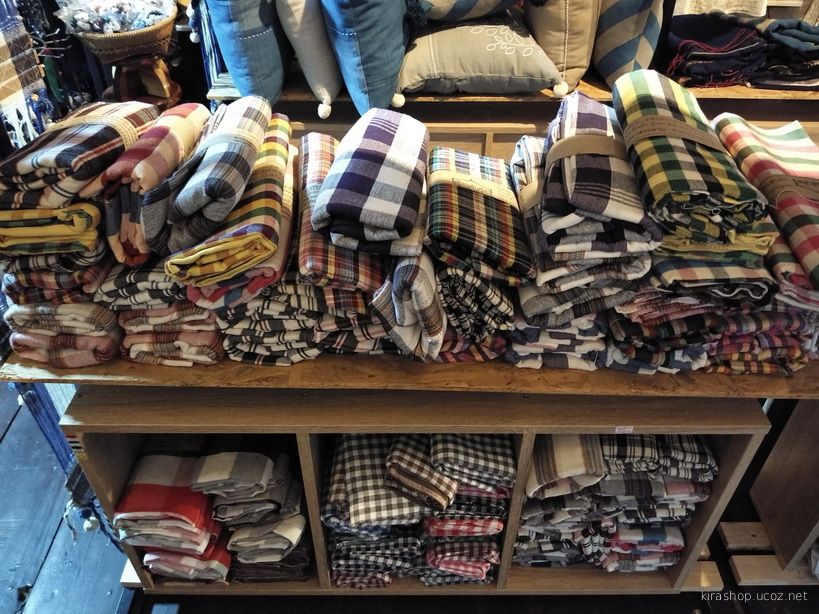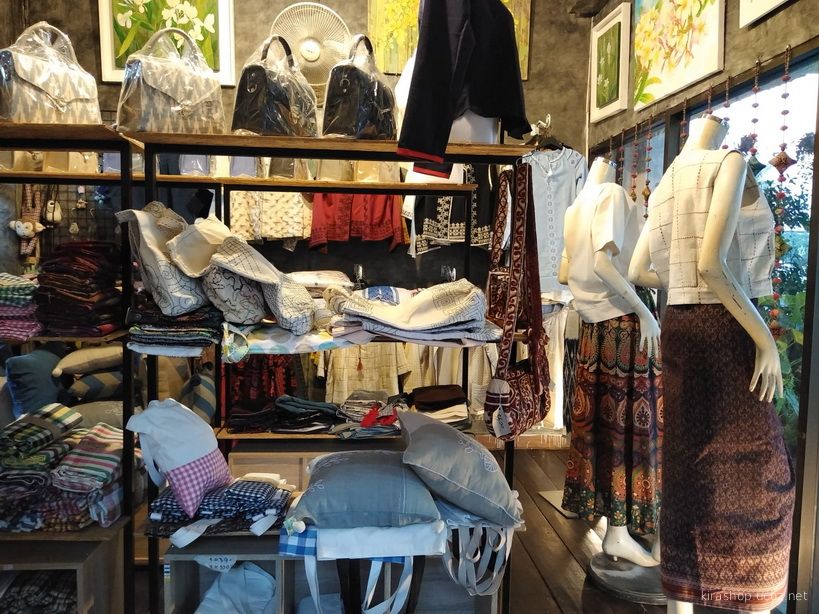
 During the 1990s and the first years of the new millennium, ethnic style has been one of the strongest influences in fashion. Designers, such as Christian Lacroix, Dries van Noten, John Galliano, Kenzo, Vivienne Tam, Yeohlee and many others, have taken their inspiration from a variety of Asian, African, Arctic, Native American and several other dress forms and aesthetic styles and created colorful, syncretic styles evocative of the past or faraway lands.
During the 1990s and the first years of the new millennium, ethnic style has been one of the strongest influences in fashion. Designers, such as Christian Lacroix, Dries van Noten, John Galliano, Kenzo, Vivienne Tam, Yeohlee and many others, have taken their inspiration from a variety of Asian, African, Arctic, Native American and several other dress forms and aesthetic styles and created colorful, syncretic styles evocative of the past or faraway lands.
 Ethnicity refers to the common heritage of an ethnic group. Members of an ethnic group often distinguish themselves from others by using items of dress to symbolize their ethnicity and display group solidarity. The words "ethnic" and "ethnicity" come from the Greek word ethnos, meaning "people." Many anthropologists prefer to use the inclusive term "ethnic group" instead of "tribe," because the latter is often employed as shorthand for "other people" as opposed to "us." Sometimes the term "folk dress" is used instead of ethnic dress when discussing examples of ethnic dress in Europe and not elsewhere in the world. "Folk" and folk dress ordinarily distinguish European rural dwellers and peasants and their dress from wealthy landowners, nobility, or royalty and their apparel. Ethnic dress, however, is a neutral term that applies to distinctive cultural dress of people living anywhere in the world who share an ethnic background.
Ethnicity refers to the common heritage of an ethnic group. Members of an ethnic group often distinguish themselves from others by using items of dress to symbolize their ethnicity and display group solidarity. The words "ethnic" and "ethnicity" come from the Greek word ethnos, meaning "people." Many anthropologists prefer to use the inclusive term "ethnic group" instead of "tribe," because the latter is often employed as shorthand for "other people" as opposed to "us." Sometimes the term "folk dress" is used instead of ethnic dress when discussing examples of ethnic dress in Europe and not elsewhere in the world. "Folk" and folk dress ordinarily distinguish European rural dwellers and peasants and their dress from wealthy landowners, nobility, or royalty and their apparel. Ethnic dress, however, is a neutral term that applies to distinctive cultural dress of people living anywhere in the world who share an ethnic background.

 The readily identifiable aspect of ethnic dress arises from a garment characteristic (such as its silhouette), a garment part (such as a collar or sleeve), accessories, or a textile pattern, any of which stems from the group's cultural heritage. Many people believe that ethnic dress does not change. In point of fact, however, change in dress does occur, because as human beings come into contact with other human beings, they borrow, exchange, and modify many cultural items, including items of dress. In addition, human beings create and conceive of new ways of making or decorating garments or accessories, and modifying their bodies.
The readily identifiable aspect of ethnic dress arises from a garment characteristic (such as its silhouette), a garment part (such as a collar or sleeve), accessories, or a textile pattern, any of which stems from the group's cultural heritage. Many people believe that ethnic dress does not change. In point of fact, however, change in dress does occur, because as human beings come into contact with other human beings, they borrow, exchange, and modify many cultural items, including items of dress. In addition, human beings create and conceive of new ways of making or decorating garments or accessories, and modifying their bodies.

 Even though changes occur and are apparent when garments and ensembles are viewed over time, many aspects of ethnic dress do remain stable, allowing them to be identifiable. In many parts of the world, ethnic dress is not worn on a daily basis; instead items are brought out for specific occasions, particularly holiday or ritual events, when a display of ethnic identity is a priority and a source of pride. When worn only in this way, ethnic dress may easily be viewed as ethnic costume, since it is not an aspect of everyday identity.
Ethnic Style in Fashion
By Lise Skov
Ethnic Dress
By Joanne B. Eicherv
Even though changes occur and are apparent when garments and ensembles are viewed over time, many aspects of ethnic dress do remain stable, allowing them to be identifiable. In many parts of the world, ethnic dress is not worn on a daily basis; instead items are brought out for specific occasions, particularly holiday or ritual events, when a display of ethnic identity is a priority and a source of pride. When worn only in this way, ethnic dress may easily be viewed as ethnic costume, since it is not an aspect of everyday identity.
Ethnic Style in Fashion
By Lise Skov
Ethnic Dress
By Joanne B. Eicherv

 Only women’s T-shirts have cap sleeves, and these are sleeves that cover only the top part of the shoulder, but which don’t go under or around your arm. The sleeve is often a little on the puffy side, giving it a very feminine look, and this type of T-shirt makes women look a little slimmer, which most women appreciate.
Thread Curve
Different Sleeve Styles. Cap Sleeves.
Only women’s T-shirts have cap sleeves, and these are sleeves that cover only the top part of the shoulder, but which don’t go under or around your arm. The sleeve is often a little on the puffy side, giving it a very feminine look, and this type of T-shirt makes women look a little slimmer, which most women appreciate.
Thread Curve
Different Sleeve Styles. Cap Sleeves.
 If the shirts are paired with a fitted bodice, they have a more feminine look, and because of the way the sleeves are designed and shaped, they have a dressy look as well, meaning you can wear a cap-sleeve T-shirt to a picnic, a brunch, or a girls’ night out.
If the shirts are paired with a fitted bodice, they have a more feminine look, and because of the way the sleeves are designed and shaped, they have a dressy look as well, meaning you can wear a cap-sleeve T-shirt to a picnic, a brunch, or a girls’ night out.
The bare-armed look is everywhere these days, on women of every age and size. Stores are overflowing with tank sheaths and other shoulder-baring tops and dresses. It is made of high quality materials, durable enought for your daily wearing.
Stylish and fashion design make you more attractive. Perfect Match with your favorite shorts,leggings, black slacks, denim jeans, etc. Great for Party, Casual, Sport, Weekend, you will definitely like it!
The Wall Street Journal The Unwritten Rules on Going Sleeveless. By Christina Binkley

